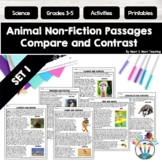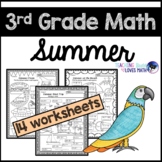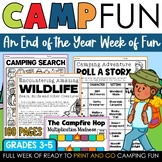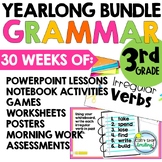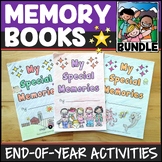73 results
3rd grade other (science) independent work packets for Easel
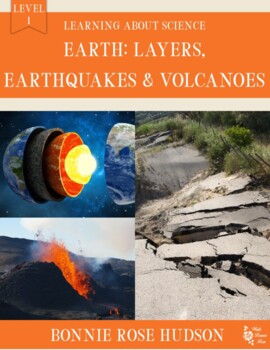
Earth: Layers, Earthquakes, and Volcanoes-Science, Level 1 (Plus TpT Digital)
Introduce students to the crust, mantle, outer core, and inner core of the earth as you learn about the earth’s layers and then discover how the movement of plates can produce earthquakes and the movement of magma can produce volcanic eruptions. Students can personalize this book by coloring the illustrations and tracing the key words in the space provided. Incorporate some fun and handwriting practice into science. A review activity sheet with answer key is also included. 12 pages total.All mea
Grades:
1st - 3rd
Also included in: Learning About Science Collection, Level 1 (Bundle)

A Closer Look at the Science of Snowflakes Activity Book (Plus TpT Digital)
Help your students have fun while learning key terms and definitions related to snowflakes, snow crystal shapes, and more with this A Closer Look at the Science of Snowflakes Activity Book. Ten engaging activities include various letter puzzles, matching, graphing puzzles, drawing puzzles, and more. This unit goes great with our A Closer Look at the Science of Snowflakes Level 3 Science unit, or you can use it as a supplement to any study of snowy weather. Answer key is included. 24 pages total.
Subjects:
Grades:
2nd - 5th
Also included in: Learning About Science Activity Book Bundle (Level 3)

A Closer Look at the Science of Snowflakes-Science, Level 3 Print (Plus Digital)
Is there more to snow than meets the eye? What is the difference between a snow crystal and a snowflake? Dive into this earth science unit to discover these answers and many more. Learn how a snowflake begins with water vapor and cools until it forms a delicate snow crystal. Take a closer look at some of the shapes of snow crystals including stellar plate, sectored plate, simple star, branched star, stellar dendrite, triangular crystal, column, needle, and needle cluster. Students can personaliz
Subjects:
Grades:
3rd - 5th
Also included in: Learning About Science Collection, Level 3-Print Version (Bundle)
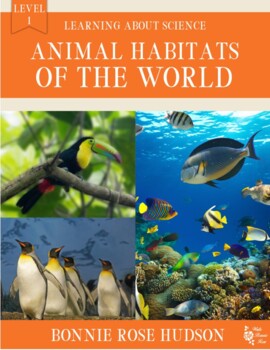
Animal Habitats of the World-Learning About Science Level 1 (Plus TpT Digital)
Animal Habitats of the World: Introduce kids to 78 animals and 18 habitats. Learn about where they live, what kind of habitat they need, what they like to eat, and more. Students can personalize this book by coloring the illustrations and tracing the key words in the space provided. Incorporate some fun and handwriting practice into science. A review activity sheet with answer key is also included. 51 pages total.Habitats include: African savanna, arctic, desert, Australian bush, Antarctica, bea
Subjects:
Grades:
1st - 3rd
Also included in: Learning About Science Collection, Level 1 (Bundle)

Common Herbs & Spices Notebooking Journal (with Easel Activity)
With the Common Herbs & Spices Notebooking Journal, students can learn about 110 common herbs and spices. They can record what climate/regions each is grown in, how it is used, what its characteristics are, what its scientific name is, and other interesting facts they learn. 113 pages total. Ages 8-13.*The Easel Activity version of this resource does not include the cover pages for ease in assigning it to students for digital or distance learning.
Subjects:
Grades:
2nd - 5th

Discovering Rocks, Minerals, & Crystals-Science Lev 3 Cursive (Plus TpT Digital)
Dig into the types of rocks that make up our planet as you learn about igneous, sedimentary, and metamorphic rocks. Learn what makes up minerals and what a crystal is. Plus, take a closer look at 23 specific rocks and crystals and their uses including granite, basalt, diorite, felsite, conglomerate, sandstone, shale, limestone, dolomite, marble, quartzite, serpentine, schist, agate, amethyst, carnelian, diamond, hematite, kyanite, rhodochrosite, sulfur, tourmaline, and turquoise.Students can per
Grades:
3rd - 5th
Also included in: Learning About Science Collection, Level 3-Cursive Version (Bundle)
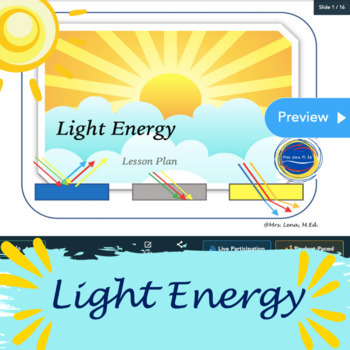
Light Energy NO Prep NGSS Florida B.E.S.T. Science Lesson
Light Energy Lesson on interaction of light energy with opaque, transparent and translucent materials. Aligned with the NGSS and Florida Science Standards SC.3.P.10.3, SC.3.P.10.4 and SC.3.P.11.1 Ideal for classroom instruction, re-teaching, and test-prep. Printable & Nearpod (integrates with Google Classroom)This resource covers: Light energy sourcesInteraction of light energy with opaque, transparent, and translucent materialsBehavior of light energy: reflection, refraction, and absorption
Grades:
3rd - 5th
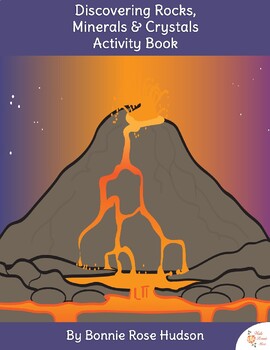
Discovering Rocks, Minerals, and Crystals Activity Book (Plus TpT Digital)
Help your students have fun while learning key terms and definitions related to studying rocks, minerals, and crystals with this Discovering Rocks, Minerals, and Crystals Activity Book. Ten engaging activities include various letter puzzles, matching, drawing puzzles, multiple choice, and more. This unit goes great with our Discovering Rocks, Minerals, and Crystals Level 3 Science unit, or you can use it as a supplement to any study of rocks and geology. Answer key is included. 26 pages total.*T
Subjects:
Grades:
2nd - 5th
Also included in: Learning About Science Activity Book Bundle (Level 3)

Life in the Ocean’s Hidden Zones-Science Level 3 Print (Plus TpT Digital)
Help students discover the hidden zones of the ocean and learn about the animals that live there in this life science unit. All five zones of the ocean (sunlight, twilight, midnight, abyssal, and trenches) are explored as well as thirty-seven different animals and plants. Students can personalize this book by coloring the illustrations and tracing the key words in print in the space provided. Incorporate some fun and handwriting practice into science. A review activity sheet with answer key is a
Subjects:
Grades:
2nd - 4th
Also included in: Learning About Science Collection, Level 3-Print Version (Bundle)

An In-Depth Look at How Our Senses Work-Science, Level 5 (Plus TpT Digital)
Why do your eyes see? Why does your tongue taste? What causes sinusitis, and why does it make it so hard to smell or even breathe? These are just a few of the answers students will learn the answers to as they take an in-depth look at how our senses work. They’ll learn the location and function of many different parts of the eyes, ears, nose, mouth, and skin as well as take a fun look at optical illusions. Numerous diagrams are given to help make these concepts accessible and easier to understan
Subjects:
Grades:
3rd - 6th
Also included in: Learning About Science Collection, Level 5 (Bundle)

Ecosystems-Learning About Science, Level 4 (Plus Easel Activity)
From producers and consumers to populations and communities, this unit explores the many parts of an ecosystem and how they work together. It starts with an explanation of an ecosystem, using Yellowstone National Park and Monterey Bay as examples. It explains community and populations and then moves on to producers, primary consumers, secondary consumers, tertiary consumers, and decomposers. It looks at the energy, or trophic, pyramid, and looks at several food webs to see it all in action. It a
Subjects:
Grades:
3rd - 5th
Also included in: Learning About Science Collection, Level 4 (Bundle)

Forecasting & Understanding the Weather-Science Level 3 Print (Plus TpT Digital)
Show your students what weather is, some of the tools forecasters use to measure it, and how certain types of extreme weather form. Discover the three elements of weather—sunlight, water, and air—as well as air temperature, air pressure, humidity, and air masses. Look at tools including the thermometer, anemometer, wind sock, weather vane, barometer, barograph, rain gauge, and weather balloon, and take a closer look at 14 types of weather including blizzards, dust storms, earthquakes, floods, fo
Subjects:
Grades:
2nd - 4th
Also included in: Learning About Science Collection, Level 3-Print Version (Bundle)

Understanding Food Chains-Science Level 2 (Plus Easel Activity)
What is an ecosystem, and how does the sun play an important part in what every living thing eats? Find the answers to these questions and much more in this unit about food chains. Students discover what a food chain is, how animals can be both predators and prey, and how every food chain starts with the sun as they learn about food chains of animals that live in the arctic, Australian woodlands, boreal forests, coniferous forests, deciduous forests, deserts, grasslands, marshes, mountains, ocea
Subjects:
Grades:
1st - 3rd
Also included in: Learning About Science Collection, Level 2 (Bundle)

A Closer Look at Body Systems-Learning About Science Level 2 (Plus TpT Digital)
Students discover the roles of key body systems and the major organs, cells, and tissues that make them up in this unit. Take a look at the circulatory system and the job of the heart, arteries, veins, capillaries, red blood cells, white blood cells, and platelets. Explore the respiratory system and learn about the nose, lungs, and air sacs. Move into the digestive system and learn about the mouth, esophagus, stomach, small intestine, villi, large intestine, and liver. Also covered are the urina
Subjects:
Grades:
1st - 3rd
Also included in: Learning About Science Collection, Level 2 (Bundle)
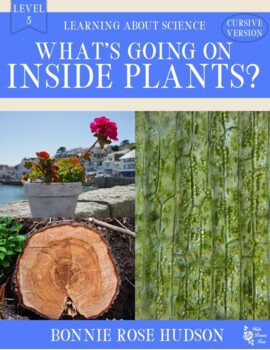
What’s Going on Inside Plants?-Science Level 3 Cursive (Plus TpT Digital)
How do plants get their food, and how do they transport it to all the parts that need it? Why do plants move toward water, light, and sometimes other objects? Learn about the processes of photosynthesis and transpiration as well as the shapes of leaves, vascular and nonvascular plants, the parts of a plant’s vascular system, and tropisms with this life science unit. Students can personalize this book by coloring the illustrations and tracing the key words in cursive in the space provided. Incorp
Subjects:
Grades:
3rd - 5th
Also included in: Learning About Science Collection, Level 3-Cursive Version (Bundle)
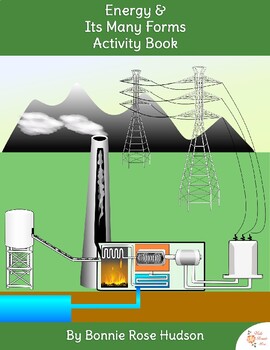
Energy and Its Many Forms Activity Book (Plus Easel Activity)
Help your students have fun while learning key terms and definitions related to types of energy and energy sources with this Energy and Its Many Forms Activity Book. Ten engaging activities include various letter puzzles, matching, drawing puzzles, multiple choice, and more. This unit goes great with our Energy and Its Many Forms Level 3 Science unit, or you can use it as a supplement to any study of energy. Answer key is included. 21 pages total.*The Easel Activity version of this resource does
Subjects:
Grades:
2nd - 5th
Also included in: Learning About Science Activity Book Bundle (Level 3)
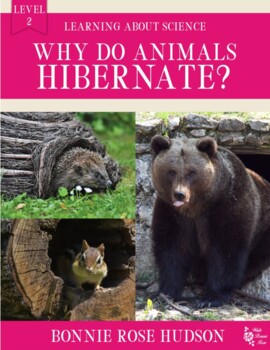
Why Do Animals Hibernate?-Science Level 2 (Plus TpT Digital Activty)
Students learn about hibernation and other ways animals survive the winter months in this unit by looking at the life of a bat, bear, chipmunk, groundhog, hedgehog, frog, snake, turtle, squirrel, beaver, and raccoon. Also included is a bonus question for each animal to encourage discussion and additional discovery. Students can personalize this book by coloring the illustrations and tracing the key words in the space provided. Incorporate some fun and handwriting practice into science. A review
Subjects:
Grades:
1st - 3rd
Also included in: Learning About Science Collection, Level 2 (Bundle)

Plant Life Cycles, Pollination & Reproduction-Learning Ab. Science 4 (+ Digital)
In this life science unit, students take a close look at the world of plants, from vascular plants to simple green plants, angiosperms and gymnosperms, lichen, fungi, yeast, molds, mushrooms, and more. They learn the many parts of a flowering plant and how reproduction happens. They also learn about the parts of seeds and several methods of seed dispersal. Next, they learn about several types of asexual reproduction such as vegetative propagation, fragmentation, tubers, runners, and bulbs. They
Subjects:
Grades:
3rd - 5th
Also included in: Learning About Science Collection, Level 4 (Bundle)
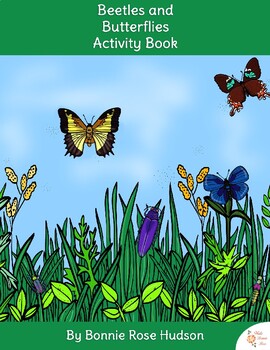
Beetles and Butterflies Activity Book (Plus Easel Activity)
Help your students have fun while learning key terms and definitions related to the world of beetles and butterflies with this Beetles and Butterflies Activity Book. Ten engaging activities include various letter puzzles, matching, a graphing puzzle, a drawing puzzle, multiple choice, and more. This unit goes great with our Beetles and Butterflies Level 3 Science unit, or you can use it as a supplement to any study of insects. Answer key is included. 24 pages total.*The Easel Activity version of
Subjects:
Grades:
2nd - 5th
Also included in: Learning About Science Activity Book Bundle (Level 3)
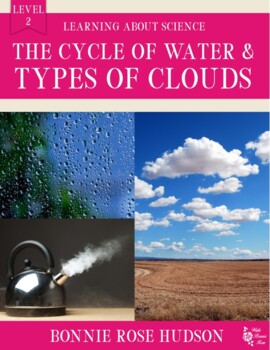
The Cycle of Water and Types of Clouds-Science Level 2 + Easel Activity
Students follow the water cycle through this unit as they learn about evaporation, condensation, precipitation, runoff, infiltration, and transpiration, and then learn the shapes of stratus, stratocumulus, altostratus, altocumulus, cirrus, cumulus, and cumulonimbus clouds. Students can personalize this book by coloring the illustrations and tracing the key words in the space provided. Incorporate some fun and handwriting practice into science. A review activity sheet with answer key is also incl
Subjects:
Grades:
1st - 3rd
Also included in: Learning About Science Collection, Level 2 (Bundle)
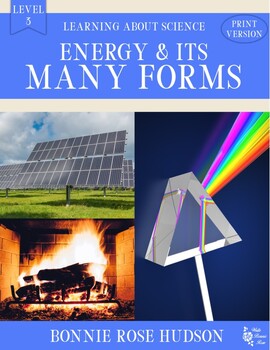
Energy and Its Many Forms-Science Level 3 Print (Plus Easel Activity)
Explore the five main types of energy (light, heat, sound, electrical, and chemical) and some of our sources of energy. Discover light energy and prisms; reflection and refraction; concave and convex lenses; and transparent, translucent, and opaque objects. Take a look at thermal energy and discover heat, conductors and insulators, expansion and contraction, temperature, conduction, convection, and radiation. Learn about how sound waves work and the differences between loud, soft, high-pitched,
Subjects:
Grades:
2nd - 4th
Also included in: Learning About Science Collection, Level 3-Print Version (Bundle)

Scientists and the Scientific Method-Science Level 2 (Plus Easel Activity)
Show your students the steps to the scientific method in this unit, and then introduce them to the jobs of scientists such as physicists, chemists, botanists, zoologists and more. Conclude with a brief look at the lives of 14 famous scientists including Galileo, Isaac Newton, Benjamin Franklin, Benjamin Banneker, Caroline Herschel, Mary Somerville, Thomas Alva Edison, George Washington Carver, Albert Einstein, Alexander Fleming, Willem Kolff, Patricia Bath, Sally Ride, and Mae Jemison. Students
Subjects:
Grades:
1st - 3rd
Also included in: Learning About Science Collection, Level 2 (Bundle)
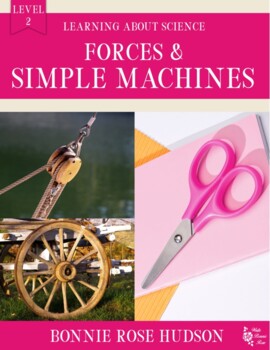
Forces and Simple Machines-Science Level 2 (Plus Easel Activity)
Students explore the concepts of motion, distance, and speed; learn about forces such as pushing, pulling, friction, and gravity; and discover the roles of simple machines such as the inclined plane, wheel and axle, lever, wedge, pulley, and screw in the complex machines we use every day. Students can personalize this book by coloring the illustrations and tracing the key words in the space provided. Incorporate some fun and handwriting practice into science. A review activity sheet with answer
Subjects:
Grades:
1st - 3rd
Also included in: Learning About Science Collection, Level 2 (Bundle)
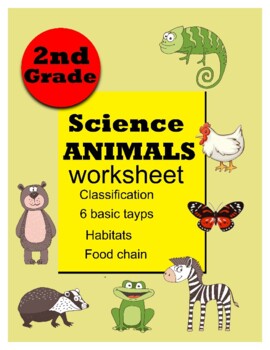
Science for second grade all about Animals worksheet
Description This worksheet Boost students' nonfiction skills AND their vocabularies with these super-engaging activity packed with fascinating facts and fantastic photos! This pack include Classification by Type: 6 basic typesMammalsFishBirdInvertebrate ReptileAmphibiansAnimals habitats OceanForestArcticDesertGrasslandFood chain Animal adapt to their habitats Type of covering Classifying animals according to the food they eatAnimals and their foodCover and Answer key includedThis pack help stu
Subjects:
Grades:
1st - 3rd
Showing 1-24 of 73 results




